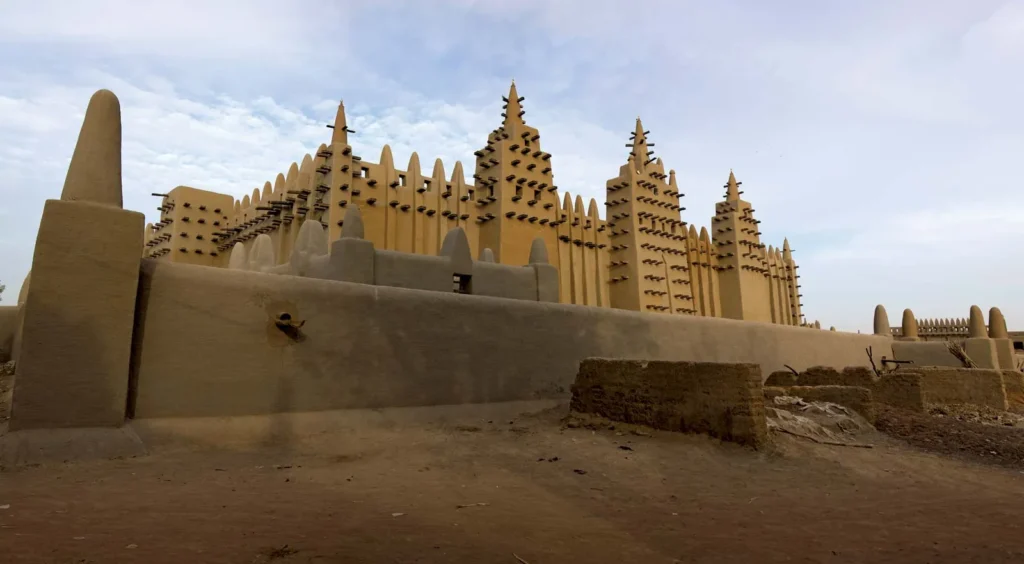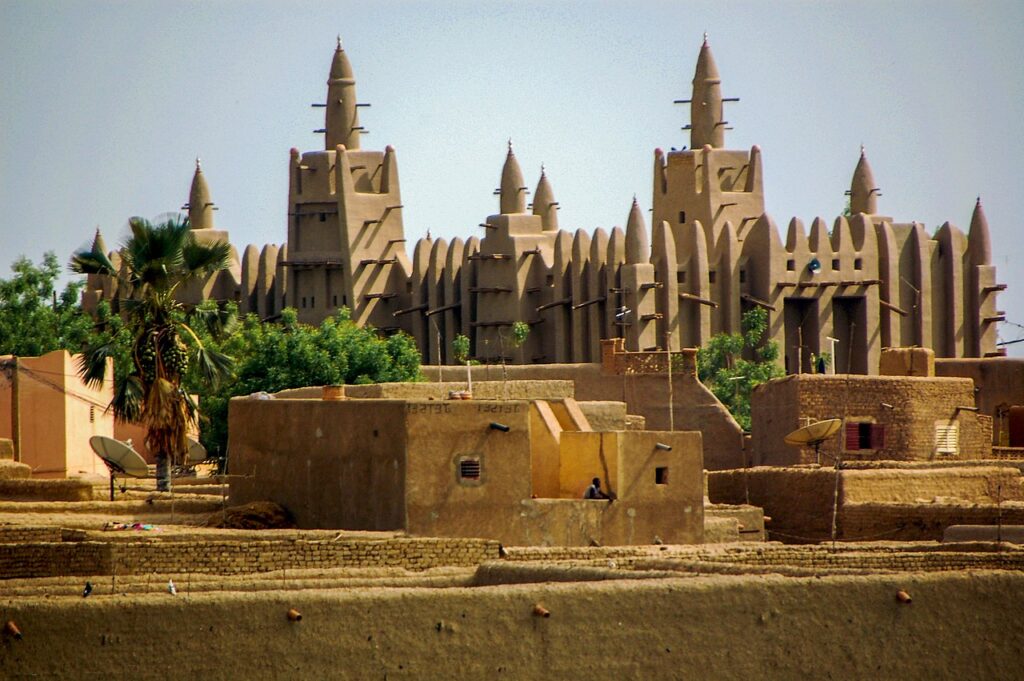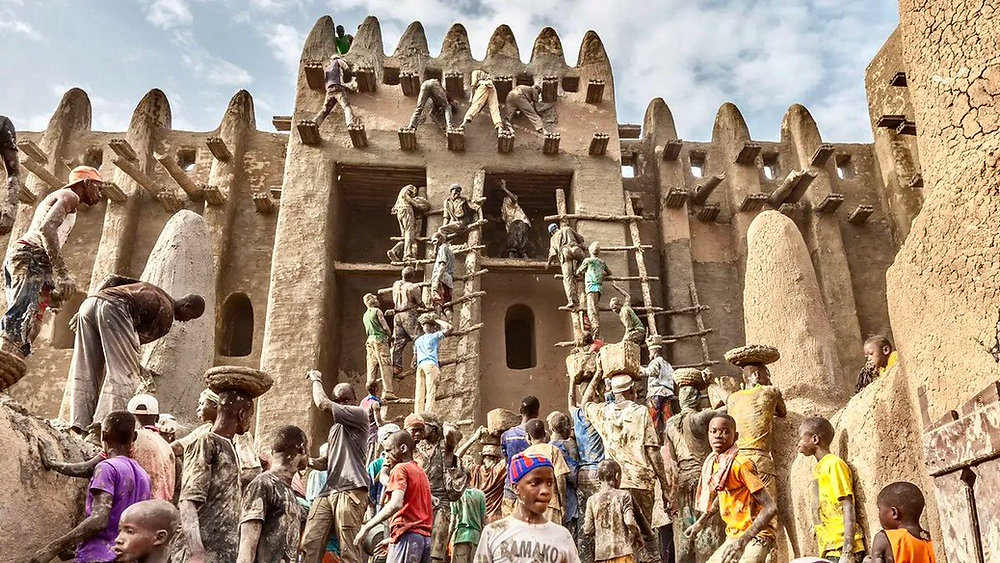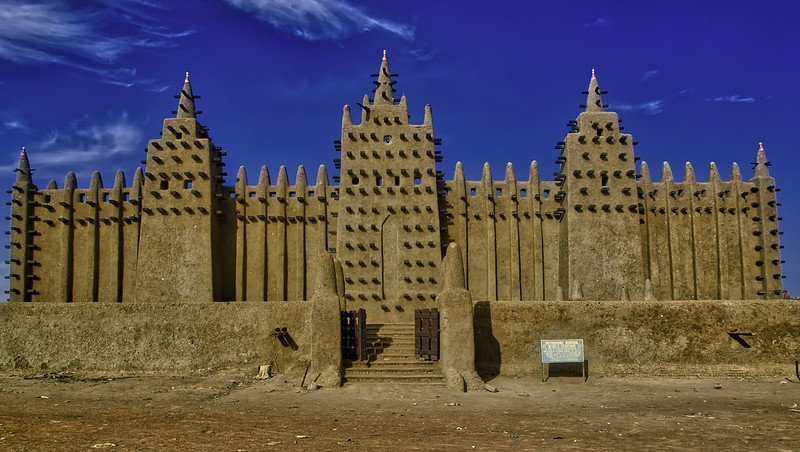Architecture is often seen as a reflection of a culture’s history, values, and way of life. In the case of Djenne, a small city located in Mali, West Africa, its unique mud-brick architecture is a testament to the rich history and cultural heritage of the region. Djenne is home to one of the most impressive architectural wonders in the world, the Great Architecture of Djenne , and the entire city showcases a distinctive style that is both functional and awe-inspiring. In this post, we will dive into the fascinating world of Architecture of Djenne , exploring its history, construction techniques, and the enduring legacy it has left behind.

Djenne has a long and storied history, dating back to at least the 3rd century AD when it was established as a market town. Over the centuries, the city grew in prominence, attracting traders and merchants from far and wide. With the rise of Islam in the region in the 13th century, Architecture of Djenne became an important center of Islamic learning and culture. It was during this time that the foundations of the city’s unique mud-brick architecture were laid.
More:Read about on Beauty of Gaudí’s Architecture in Barcelona, Spain
The most iconic structure in Architecture of Djenne is undoubtedly the Great Mosque, a UNESCO World Heritage Site and the largest mud-brick building in the world. Built in the 13th century, it stands as a testament to the ingenuity and craftsmanship of the people of Djenne. The mosque is not only a place of worship but also serves as a social and cultural hub for the community.
The construction of the Great Mosque follows a specific architectural style called Sudano-Sahelian, which combines elements of both Sudanic and Sahelian architecture. The Sudanic style is characterized by the use of mud-brick construction, while the Sahelian style incorporates features like the distinctive honeycomb-like decorations found on the mosque’s facade.

Mud-brick construction utilizes locally-sourced materials, primarily mud and straw, making it a sustainable and environmentally-friendly building technique. The mud is mixed with straw to reinforce the bricks, giving them strength and durability. The bricks are then molded by hand and left to dry in the sun before being used in the construction process. This traditional method has been passed down from generation to generation, ensuring the preservation of cultural knowledge and skills.
The Great Mosque of Architecture of Djenne is a perfect example of the unique architectural style found in the city. Its massive walls, towering minarets, and intricate designs are a sight to behold. The surface of the mosque is adorned with decorative patterns, created by pressing wooden sticks into the wet mud before it dries. This technique not only enhances the aesthetics but also protects the bricks from eroding under the harsh Sahelian climate.
More: Wanted to download Odisha Magazines, visit here
Another notable feature of Architecture of Djenne is the absence of doors and windows on the street-facing walls. This is a deliberate design choice aimed at protecting the buildings from the annual flooding that occurs during the rainy season. Instead, access to the buildings is provided through interior courtyards, keeping the structures safe from water damage and allowing for a cooler climate inside.
The Architecture of Djenne has not only shaped the physical appearance of the city but also influenced the social fabric of the community. The buildings are not constructed by hired workers but instead rely on the collective effort of the community. Every year, the people of Djenne come together for a festival called “Crepissage,” where the mosque and several other buildings are repaired and replastered with fresh mud. This communal effort serves as a symbol of unity and strengthens the sense of community among the residents.
While Architecture of Djenne has stood the test of time, it faces several challenges in the modern world. The effects of climate change, including increased rainfall and rising temperatures, pose a threat to the mud-brick structures. Erosion and decay are becoming more prevalent, requiring constant maintenance and repair work. Additionally, the growing population of Djenne puts pressure on the limited space available within the city walls, leading to the construction of modern buildings that do not follow the traditional architectural style.

Efforts are being made to preserve and protect Architecture of Djenne l heritage. Organizations such as the Aga Khan Trust for Culture and UNESCO are working alongside local communities to develop sustainable conservation strategies. These initiatives focus on raising awareness, training local architects and craftsmen, and implementing innovative techniques to mitigate the impact of climate change.
Djenne stands as a living testament to the power of architecture to shape and define a community’s identity. Its mud-brick buildings showcase the resilience, creativity, and spirit of the people who call this ancient city home. By understanding and appreciating the unique architectural heritage of Architecture of Djenne , we not only celebrate the past but also contribute to its preservation for future generations to marvel at.
FAq For Discovering the Unique Architecture of Djenne
What is the architecture of Djenne known for?
The architecture of Djenne is known for its unique and mesmerizing mud-brick structures, particularly the famous Great Mosque of Djenne. These structures showcase the traditional Sudano-Sahelian architectural style, characterized by intricate patterns, decorative elements, and towering minarets.
Where is Djenne located?
Djenne is located in the central region of Mali, in West Africa. It is situated on the floodplain of the Niger River, approximately 354 kilometers (220 miles) southwest of the capital city, Bamako.
Is Djenne a UNESCO World Heritage site?
Yes, Djenne has been recognized as a UNESCO World Heritage site since 1988. Its inclusion is primarily due to its outstanding mud-brick architecture and the continuous practice of traditional architectural techniques passed down through generations.
Can I visit the Great Mosque of Djenne?
Yes, visitors can explore the Great Mosque of Djenne. It is considered the largest mud-brick building in the world and is a significant religious and cultural landmark. However, access to certain areas of the mosque might be limited, and it is important to respect the customs and rules associated with the site.
What is the best time to visit Djenne?
The best time to visit Djenne is usually during the dry season, which spans from November to April. During this period, the weather is more pleasant, and the risk of heavy rainfall and road difficulties is reduced.
Are there accommodations available in Djenne?
Yes, Djenne offers a range of accommodations to suit different budgets and preferences. From boutique hotels to guesthouses, visitors can find a place to stay that provides a comfortable experience while immersing in the unique atmosphere of the town.
Are there other attractions to explore in Djenne?
While the Great Mosque of Djenne is the most iconic attraction, there are other noteworthy points of interest in the town. Visitors can explore the lively local market, learn about traditional pottery making, and experience the vibrant cultural heritage of the people of Djenne.
Is Djenne easily accessible?
Djenne can be reached by road or river. The town has a ferry service that operates between Mopti and Djenne, offering a scenic journey along the Niger River. Additionally, there are roads connecting Djenne to other major cities in Mali, but it’s advisable to check local conditions and transportation options beforehand.
Are there any cultural considerations when visiting Djenne?
Yes, when visiting Djenne, it is important to respect the local customs and traditions. Dress modestly, especially when entering religious sites, and follow any guidelines provided by local authorities. Additionally, seek permission before photographing individuals or their property to ensure cultural sensitivity.
Can I participate in any cultural events in Djenne?
Djenne is known for its vibrant cultural celebrations, such as the famous Djenne Mud Architecture Festival, which takes place every three years. Visitors may have the opportunity to witness or participate in traditional music, dance performances, and other cultural festivities that showcase the rich heritage of the region.

